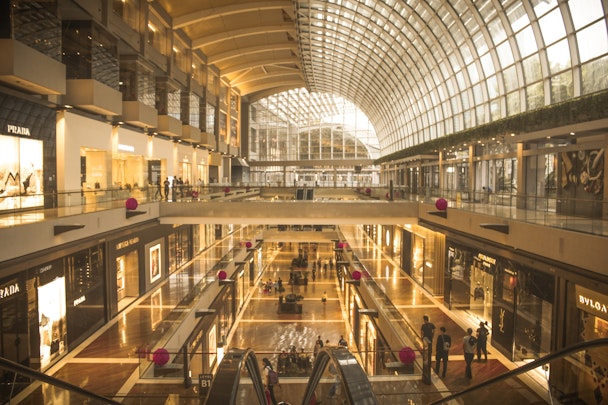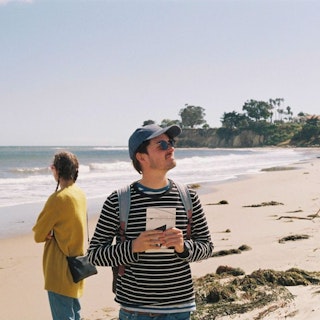The future of luxury marketing, according to marketers
Luxury marketing has been hit hard by the Covid-19 pandemic. Traditionally relying on high-ticket advertising investments driving customers to high-end retail experiences, luxury brands have had to adapt fast to a world of reduced mobility.

Luxury brands have been hit hard by the pandemic. How can marketers help them evolve? / Unsplash; AR
This has hastened a shift of ad spend from IRL to social, while luxury brands find themselves revolutionizing their in-store experiences to entice shoppers back to stores.
Are these changes here to stay? How can luxury marketers help their brands adapt to changing environments and demographics? We spoke to experts from The Drum Network to find out.
Daniel Swepson, head of inbound marketing at Woven
No idea if you heard, but 2020 was a tough year. And, with a 23% decline globally, the personal luxury goods market took a palpable hit – but there’s some bright light on the horizon.
In that same year, the number of high-net-worth individuals (HNWIs) grew by 2.5% globally, and by 12% in Asia, so the market isn’t just still there, it’s expanding. And while they’re not spending as much on the same products and services as they were pre-pandemic, they’re putting increasing value on investment pieces and experiences. This is a big opportunity, if brands choose to take it.
By 2025, 55% of the luxury audience will be millennials or generation Z – groups who feel completely at home in their preferred social channels and value experiences. If you want to reach them, you need to connect with them on their own territory and make providing those experiences a key part of your channel plan. Social may not appear to drive many sales for high-ticket items, but it’s a crucial part of communicating your brand story during the attract and engage phase of your customer journey, which leads to long-term engagement and an affinity for your brand.
Typically, luxury brands invest heavily in traditional channels: OOH, above the line and high-end in-store experiences to complete the journey. But what about everything in between? What happens when your stores are closed or people aren’t visiting physical shopping destinations? That creates a huge experience debt for your audiences and customers. The world may be awakening from lockdowns and travel restrictions, but that doesn’t mean footfall volumes are going to bounce back immediately. Now more than ever, it’s crucial to ensure your digital customer journey and stores deliver as unique and intimate an experience as your physical stores or showrooms do.
Simone Stewart, head of sales and marketing, Propeller
The dethroning of the cornerstone mediums for luxury advertising throughout the pandemic has contributed not only to a longer term shift in advertising channels in the sector, but the adoption of higher ratios of digital and social channels for luxury advertising that will reinforce digital-first behaviors that have been established throughout the past 18 months.
As consumers have shifted their focus to digital engagement with brands through all phases of the conversion funnel, this shift has contributed to a higher expectation from consumers for all interactions to be available via digital platforms moving forward. Consumers increasingly want to have the option, at least, to access communities, customer service and personalized experiences online – particularly if their original interaction with advertising was in that realm.
While the return of in-store retail was always inevitable, once customers have had the choice to interact exclusively online, it is near impossible to step back from that without damaging loyalty.
This shift will see the luxury industry embracing digital adoption across the board, from advertising channels to e-commerce platforms, and ongoing relationships with customers increasingly important in 2022 and beyond.
Utilization of online advertising such as social also enables a more direct route to conversion, with social platforms driving in-app purchase and CRO heavily over the past few years. These will of course have a higher engagement for certain brands, products and demographics, but for those brands that have seen success from these channels, a shift in media spend to channels where ROI can be calculated seems the obvious choice.
Consumers now expect more from retailers online and offline. The winners at the end of the day are likely to be the retailers who can leverage technology to deliver true omnichannel experiences, and that’s applicable to advertising as much as interactions.
This is why not only will digital advertising mediums be increasingly visible in the marketing mix, but platforms that facilitate customer engagement and deliver seamless customer experiences will dominate the landscape. And this won’t stop with the advertising platforms they choose to back. Responsive, tailored and consistent experiences are driving customer retention – the more immersive and unique the better.
This is where digital solutions such as Gorgias, ReCharge, Hero and Klaviyo can help transform end-to-end digital experiences. Shopify enables brands to bring their business online, providing an avenue for customers to find and connect with a store online. The integration of additional platforms such as these helps retailers build stronger connections and provide new and compelling experiences, while also fostering loyalty.
Take Hero, the virtual shopping platform that adds the IRL experience to your online store. The platform enhances the online experience, providing reliable video content of products, one-to-one video sales assistance and more, encouraging further exploration and retention post purchase.
Regardless of price point, consumers want what they want, when they want it, and they don’t always want to go into a physical store to get it. While particularly in the luxury market, the in-store experience is harder to replicate online, platforms such as Hero will see digital-savvy consumers able to replicate elements of the in-store experience from the palm of their hand. And that conversion opportunity will only drive the viability of digital marketing channels.
Ada Luo, head of APAC digital, Croud
The key audience for luxury products is changing, and as a result the channels and ways in which brands communicate with and inspire this audience are also shifting. In a post-pandemic world, cinema and print will eventually bounce back, but the luxury industry is likely to wave goodbye to those mediums and continue to innovate and engage with new technologies to influence the next generation of customers.
The adoption of new technology and channels by various brands in the last 18 months has already given the industry a taste of this approach – Balenciaga’s move to release its fall 2021 collection in the form of an online video game has taken brand awareness to a new high and allowed the brand to tap into a wider audience. Similarly, the collaboration between Net-a-Porter and the Animal Crossing game shows the huge commercial potential of in-game purchases, while AR try-on is gaining popularity for luxury watches and clothing on Snap, and TikTok influencers stole the limelight at New York Fashion Week. Luxury advertising is already entering a new era.
Customers are adapting to the journey of purchasing luxury products online, and this is particularly apparent in China, where personal luxury sales are set to outgrow any other region in the world. Tmall Luxury Pavilion, the luxury e-commerce marketplace that is part of the Alibaba Group, saw a whopping 159% year-on-year increase in luxury sales in Q1 2021, even when offline activities had returned to normal in mainland China.

